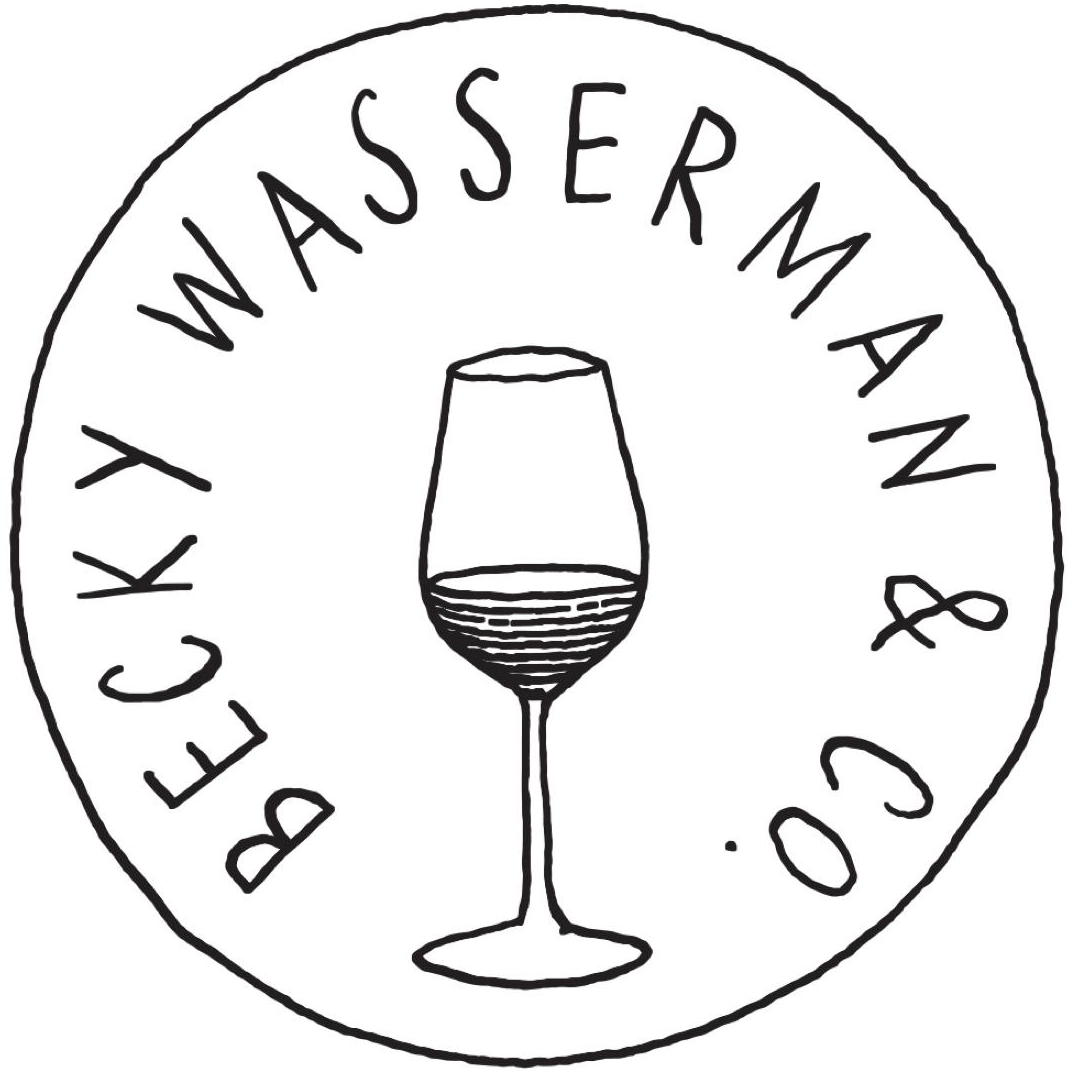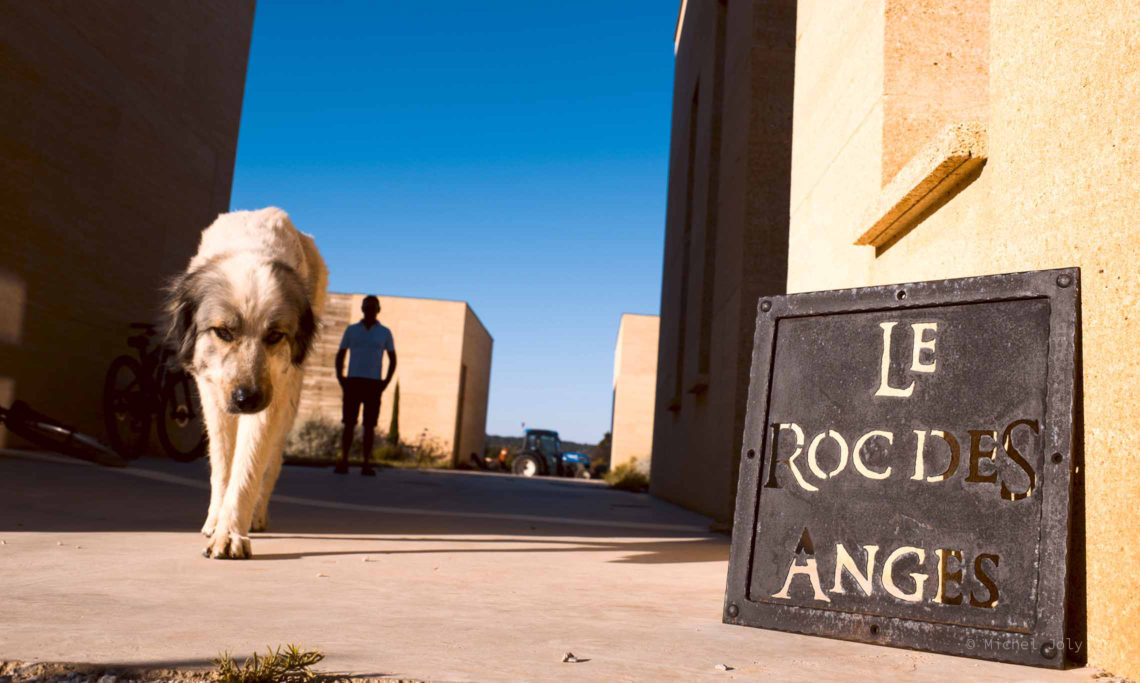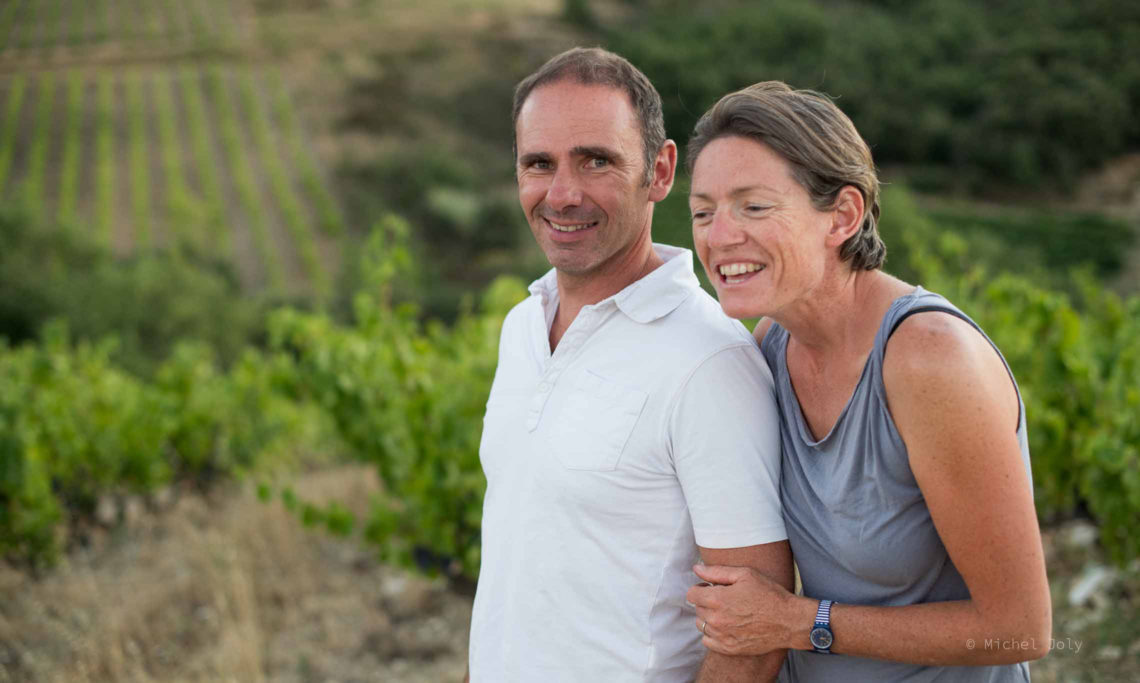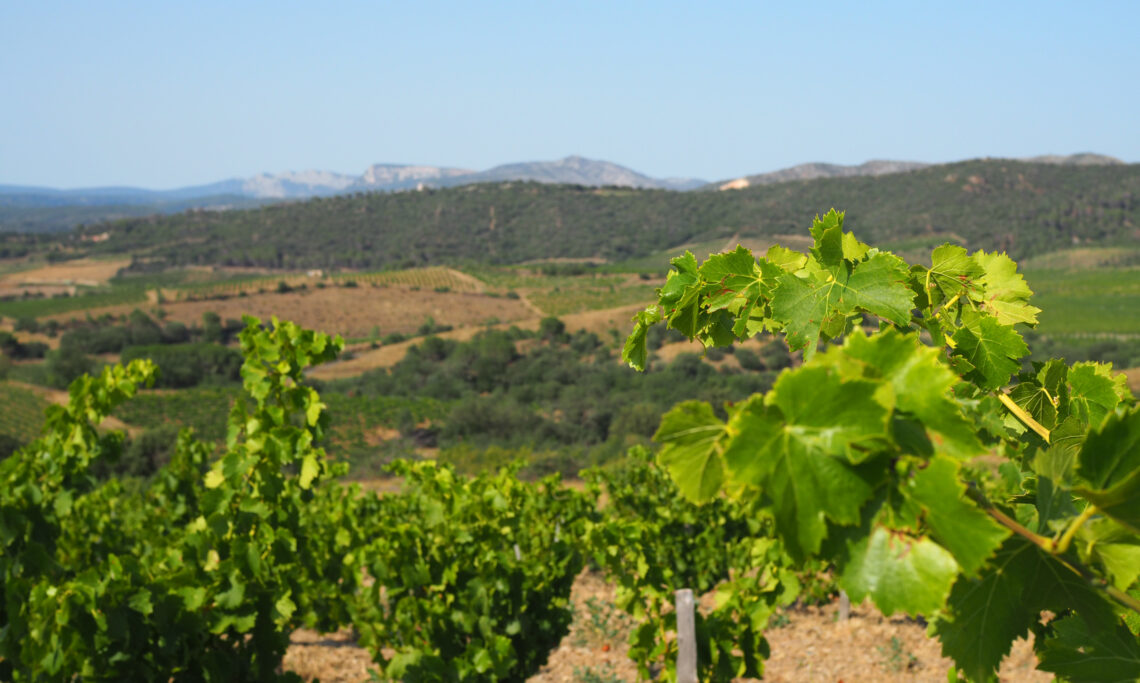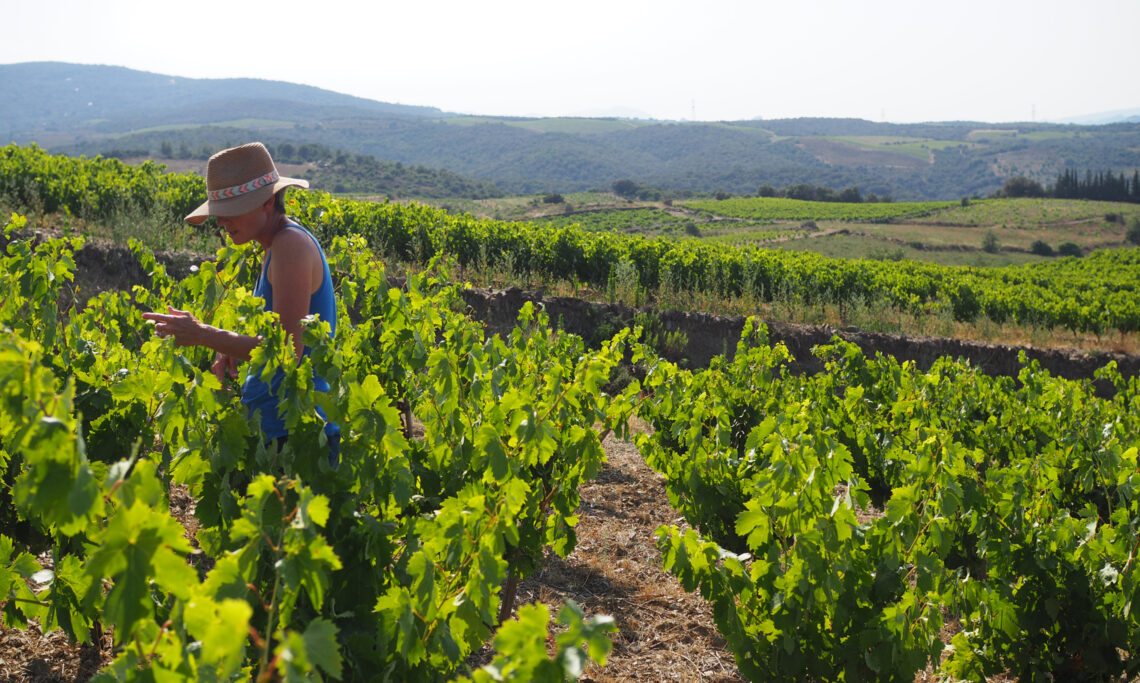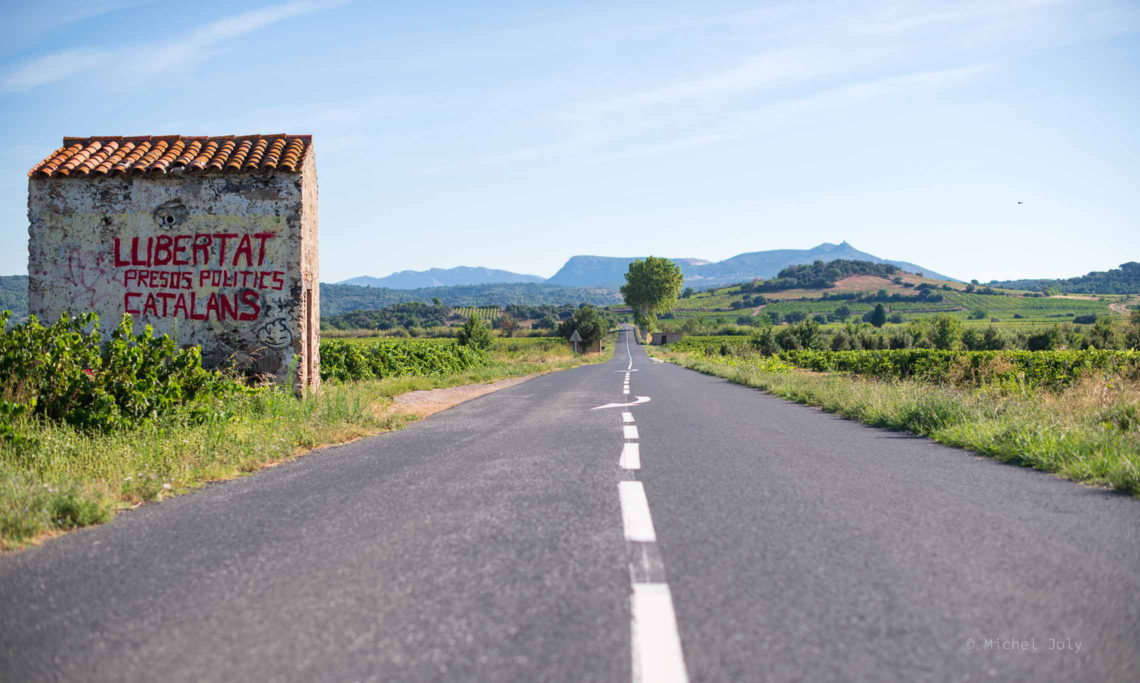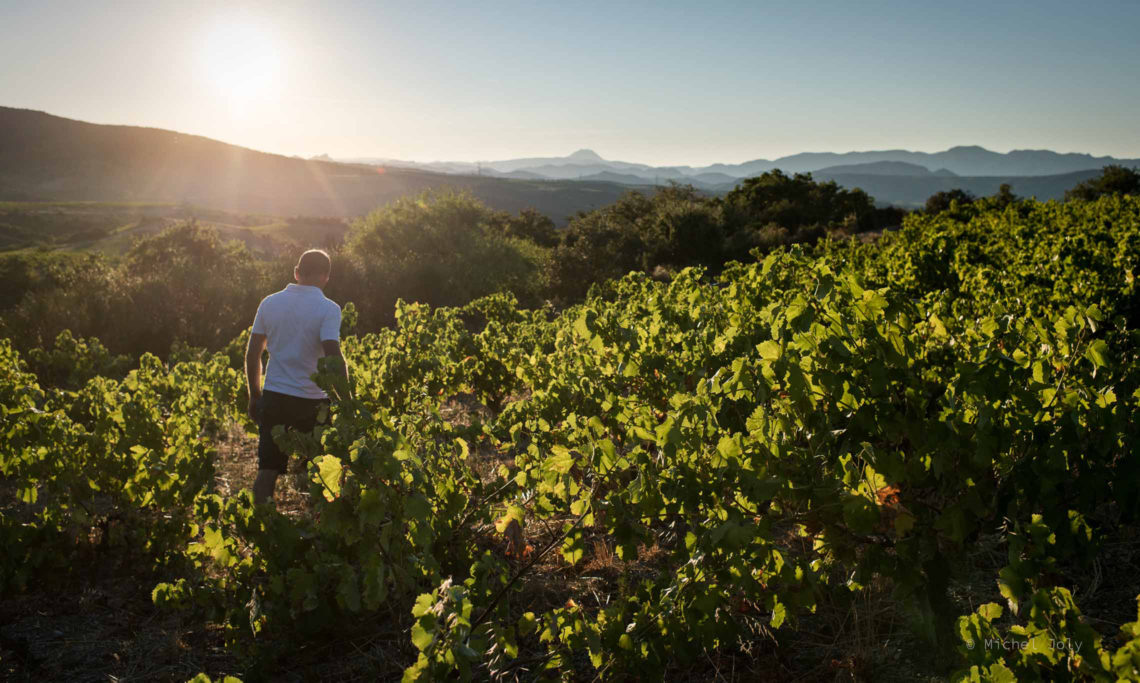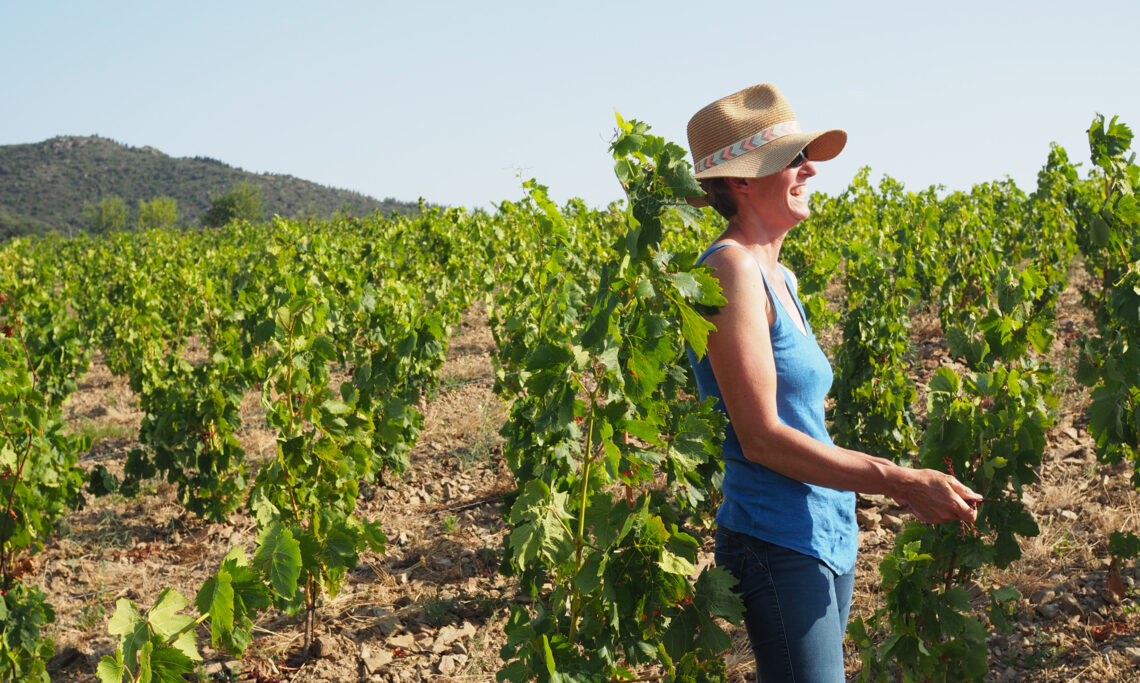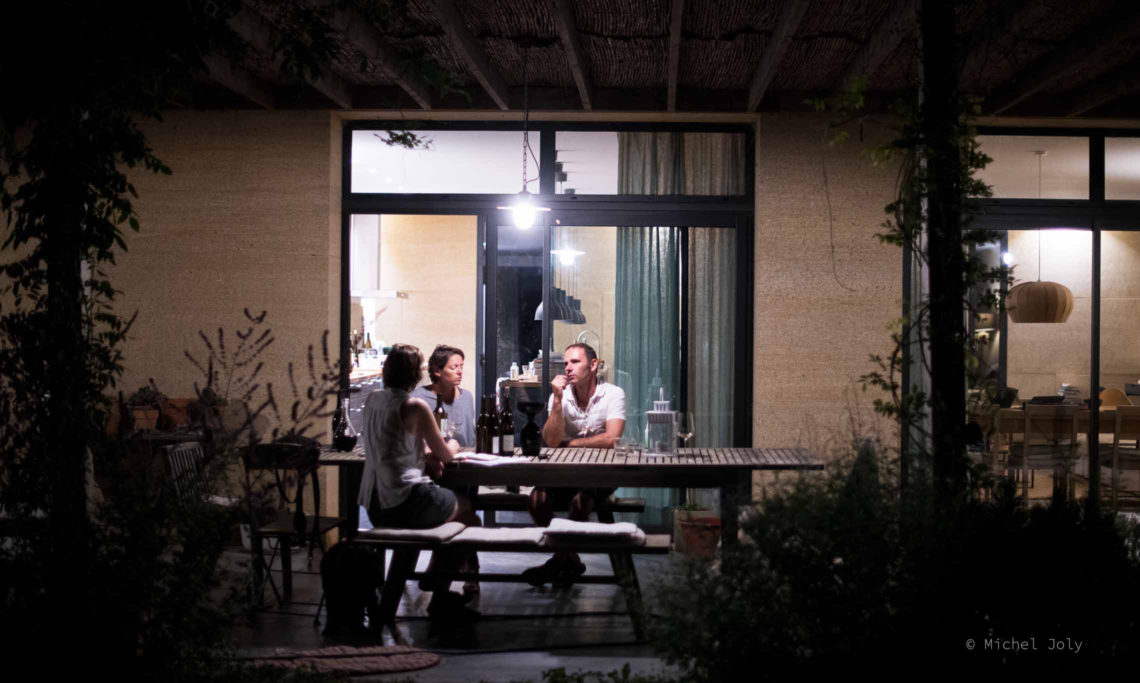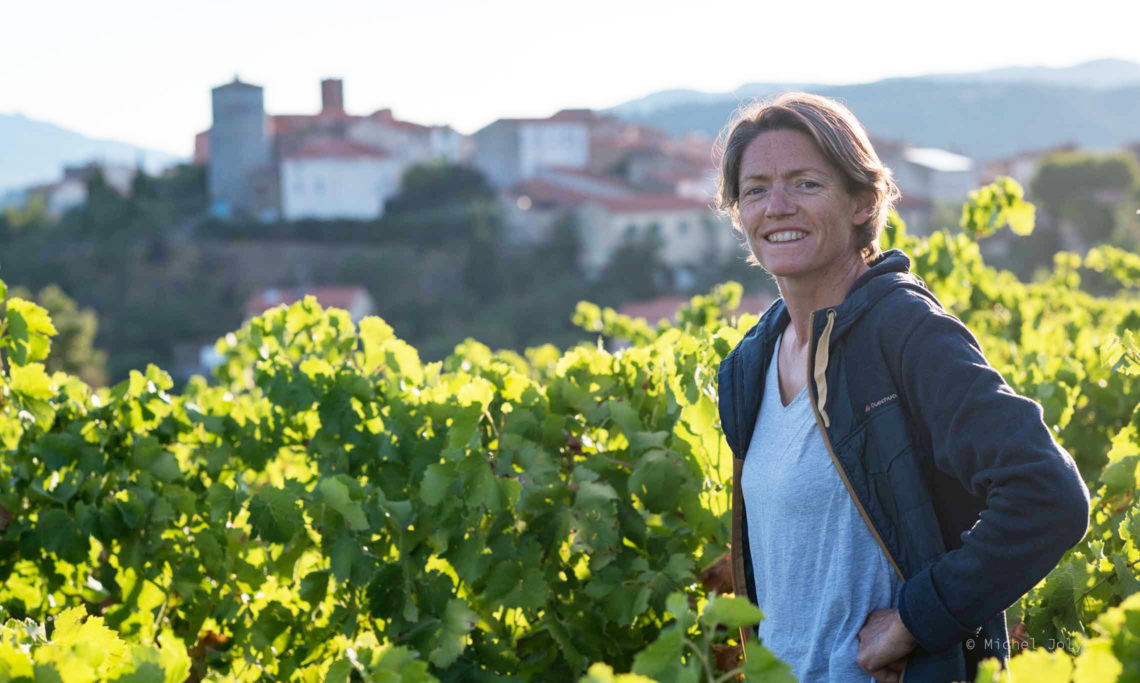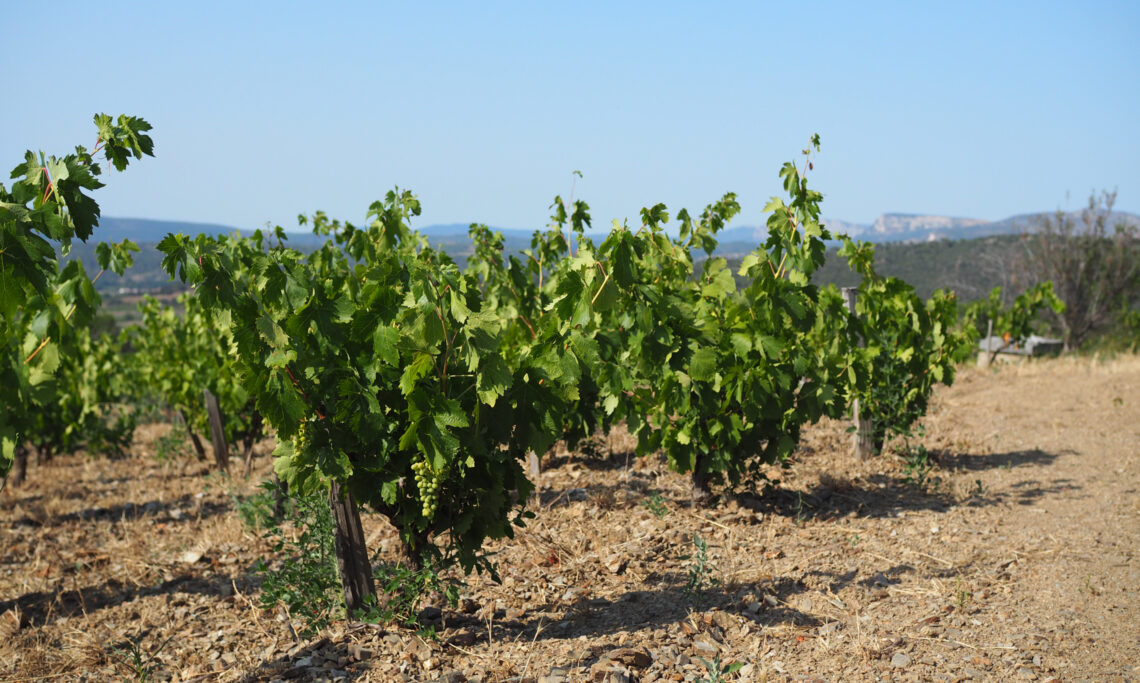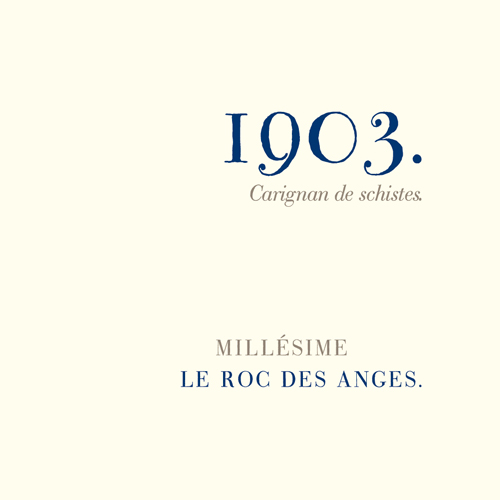Domaine Profile
- Location: Latour de France, Roussillon
- History: Marjorie was born in Grenoble and grew up in the Northern Rhône. Stéphane was born in Normandy. The couple met at the agronomy school in Montpellier. Marjorie apprenticed at Domaine Gauby; Stephane at Cuilleron and Les Vins de Vienne, after which he worked at Mas Amiel. They founded Roc des Anges in 2001.
- Varieties: Carignan Noir, Syrah, Serine, Grenache Noir, Mourvèdre; Grenache Gris, Grenache Blanc, Macabeu, Carignan Gris, Muscat à Petits Grains, Malvoisie
- Viticulture: Organic (certified, practicing since 2008) and biodynamic (certified, practicing since 2011)
- Winemaking (whites & rosé): Pressed with whole clusters, settled without cooling. Ambient yeast fermentation with no added SO2 in used barrels and foudres (228, 500, and 1500L). Despite very low pH’s, malolactic conversion tends to happen except on L’Oca. No fining, light filtration. 40-60 ppm total SO2 at bottling.
- Winemaking (reds): Mostly destemmed. Ambient yeast fermentation started with a pied de cuve in concrete tanks for 7 days. Aged in tank. No fining, light filtration. 30-50 ppm total SO2 at bottling.
“Tannins need to be a weave: tight enough to be in resonance with minerality, loose enough to let salinity through — the idea of letting through is important.” — Marjorie Gallet
April 2018
There are two roads from Perpignan to Le Roc des Anges. Take the southernmost. After the village of Millas it climbs quickly and the view is arresting.
Since my arrival in the Roussillon, Mount Canigou, the highest peak in the Western Pyrenees, has been hiding under a hijab of clouds. This is frustrating. I am oddly drawn to it and crave a clear view. After a couple of hairpin turns, suddenly, there it is: unobscured, magnetic, massive – “a magician among mountains,” wrote Rudyard Kipling. OK, I’ll concede that the Pyrenees are real mountains too. When my brother nearly died there in his twenties, I had thought less of him for failing to nearly die in the Alps.
The road crests the Col de la Bataille, Battle Pass. At only 265 meters altitude, ‘pass’ feels like an exaggeration but ‘battle’ is most likely true – it was a border post in the Middle Ages between the Kingdom of France and the Crown of Aragon. The road then laces down to the Agly Valley floor where pleasantries immediately feel indecorous. It is April and France is lush green. But not here. Here it is the color of dust.
Odds do not favor plants in the Roussillon. The sun goes after them with the intractability of a blowtorch. Both bedrock and soils are schists and do not retain water. What moisture does manage to hang on after scarce rains is hunted down by the Tramontane, a legendary wind that blows on average for one third of the year.
Graffiti on an old bus stop demand the release of Spanish Catalonian political prisoners. Not to make light of the movement, but I can’t help thinking that climate plays a part in the unrest. The winds of the south — Mistral, Autan and Tramontane — are so relentless they can profoundly affect humans and animals. Gabriel Garcia Marquez wrote that the Tramontane “carries in it the seeds of madness.” The penal code of the County of Toulouse afforded extenuating circumstances to crimes committed during strong Autan winds.
The sign to Domaine Roc des Anges points to a modern building. The good news is that the building is so tasteful it could house a small museum of modern art. The bad news is that such taste applied to a winery usually means its wines will taste luxe; drink the way the inside of a premium German SUV feels. I don’t like formulaic premium texture in my wine, especially the sweetness of wood trim.
Marjorie Gallet is welcoming, yet a little cautious despite an introduction by our mutual friend Romain Guiberteau. Her husband, Stéphane, will be with us shortly. We begin tasting without him. Two whites in, my jaw drops.
My northern palate rarely agrees with France’s southeastern whites. I find them too spherical, too tropical, too high in alcohol, and because they want to be taken seriously, they often come with wood trim. But Marjorie pours whites so bright, so taut, mineral, and saline, I am dumbfounded. I had come for the reds. I had no idea the region was capable of whites like this. I don’t think many people do. As it turns out, their pH’s hover around 3.0 (just like Chenin Blanc in Saumur) and their alcohol is below 13%. These are wines I will crave as much as I crave Aligoté, Chenin, Melon, or Riesling—they are that fresh— and what is even more mesmerizing is their minimalism. They are monuments of economy, as if the stones themselves had been loaded in the press and out came eau de schiste.
Marjorie is reassured by my enthusiasm and talks freely about her wines. She barely mentions aromas, and methods not at all. Instead, her descriptions are textural, contextual, terroir-centric, full of beautiful imagery, and spiritual. We become fast friends.
Stéphane walks in when we switch to the reds. He eyes me with the same caution Marjorie had at first. It’s not that the Gallets are aloof (though as I look at their thin yet muscular frames and the wind picks up outside and the lack of water is brought up time and time again, I can’t help thinking of Fremen) but they are tired of always having to defend their wines’ intense minerality.
My visit coincides with the demotion of Roc des Anges by the Revue du Vin de France from two stars to one, the winemaker’s equivalent of a chef losing a Michelin star. The news was delivered with acid reflux and a god complex: “Under the pretext of purity and edge, too many of the wines border on thin. We remove a star hoping this will encourage the vignerons to infuse more flesh and pleasure in their creations… From a subjugating diaphanous beauty to a pitiful, rachitic thinness, there is sometimes only the thickness of an eyelash.”
I haven’t yet read this but it is absolutely not what I see; or maybe it is what I see, but I find it dazzling.
“Clay soils provide the vine with a constant supply of organic matter which adds generosity to the texture of wine,” Marjorie explains. “But we have almost no clay in our schists, and our soils don’t retain organic matter well. It is only available to the plant in two short spurts, once in the spring and once in the fall. The rest of the time, the vine is on its own. Without organic matter we are in a purely mineral realm.”
“In a purely mineral realm” are the wines my dreams are made of. It makes my mouth water and my mind go places. It could be the title for an album in the ECM jazz catalog, for a major painting, for a poem. It certainly beats the living hell out of blackberries with hints of garrigue.
For lunch at a nearby restaurant, the Gallets bring a bottle of 2014 Las Trabassères, their most profound Carignan made from old vines planted in 1913 on a north-facing slope. “After 2015, we stopped making it every vintage. There are about five people who like it, and three of them are in the room,” Stéphane quips. “It's too mineral, too pure. We’ll bottle a little in the great vintages.”
With its fruit barely clinging to the structure in the manner of the vines barely clinging to the schists, Las Trabassères tastes like an allegory for the Roussillon’s desertic beauty. It is tense and gritty like the decomposed schists it is born from. The site’s northern exposure even accentuates the wine’s sternness and infuses it with a night-dwelling freshness that so convincingly opposes the Roussillon’s swelter.
A word I love in the French wine tasting vocabulary is fondu, melted. It describes the texture of wine that has been cellared or given time to breathe, when its structural core has resolved. Tannins and minerality can still be perceived, but they are now seamlessly woven into the texture, playing a supporting role, providing breadth, energy, and intelligence. The difference between a wine that goes nowhere with air and one that keeps drawing you in, is a core of something. It doesn’t have to be minerality, but nothing does this better than minerality.
Sure enough, after a little time, Las Trabassères’ core begins to melt. The old vine Carignan fruit emerges slowly like a shy yet willful student raising their hand in the back of the class. I want to sit with it and witness the fruit soar, as I know it will, but the restaurant has emptied and we must politely leave, too. Though I insist I love Las Trabassères, the Gallets are not convinced. They press the bottle in my hands and make me promise to taste it again later. “You’ll see,” they say.
Two days later, I have dinner with Becky and Russell. How was my trip? Apart from Roc des Anges, this was also my first visit to Pedres Blanques and Danjou-Banessy. The region’s magnetism, its harsh, disciplinarian beauty, the courage it takes to grow vines there, the talent of these people, their equally strong principles, the blindsiding freshness of their wines, and the 6-hour drive home I spend replaying it all, have plunged me into a contemplative trance. The Roussillon has moved me in ways I did not expect. I open my mouth to explain but I am not ready to let go of the hypnosis and turn my feelings into sentences. Instead, I retrieve Las Trabassères from my car.
The core is completely fondu. The texture is refined and the fruit soars. It makes it so easy to see why those who care about the Roussillon think of Carignan as the Pinot Noir of the South. Becky and Russell are subjugated. “I love Carignan,” she coos.
But what are we going to do with these majestic wines who sin by being neither luxe nor glouglou?
Screw it! Build it and they will come — all five of them.
September 2022
In four years, the reds have changed quite a bit. In part, this is because Marjorie and Stéphane pick earlier than they used to. Though this won’t magically turn the fruit from black back to red, it can keep it fresh-black and tasting like noyau, the stone or pit of fruit, and for reds in particular, like cherry pit. Noyau is high praise in French wine speak, especially in these warmer vintages. But the window to harvest this is ephemeral and not the easiest place to stick a vigneron’s landing. If they’re going to miss it, Marjorie and Stephane prefer to be too early rather than too late. Good. God save the crunch.
They have just sent us some 2021s. We taste them in the office kitchen and marvel at Segna de Cor and Australe. How much closer to glouglou they’ve wandered, yet how not glouglou they remain. (No carbo.) It is still a pretty rare line to walk and exactly the line we are looking for.
Silence sets in when we taste 1903, one of the top Carignans.
Herbs – medicinal, not garrigue. Something at the hypothetical crossroads of hay and bread dough. Blood orange. Balsamic. The cement of the tank. An unconforming lack of fruit notes, red or black, except on the following day, when there is purple fruit as fresh as if the wine had been sampled from the tank. The attack is so addicting: relaxed and full of cuddles, but also very classy. There is sweetness – and it is southern – but there is freshness too, with acidity that is discreet, yet filling all the nooks. The texture is velvety but the word cloying won’t even cross your mind. The tannins form a contained core on the finish, a knitting pin of schisty stuff, not a tube. It is definitely Rayas-like in class, love and undeniability, but without the brown sugar and with a little licorice stick bitters. It’s just so happy, giving and lifted, it will never need therapy. It’s to be taken seriously, though, as in high up there with the very best of the south, effortless and magnificent.
“The skin is the grape’s interface with the exterior world, and it picks up everything: the sun, the dust…” Marjorie told us during our last visit. “It speaks more of the climate than the pulp does. And skin tannins can mask minerality, salinity, the sandy quality of the finishes, fluidity, the evasiveness even. Tannins need to be a weave: tight enough to be in resonance with minerality, but loose enough to let salinity through — the idea of letting through is important. To make our reds, we now take inspiration from our whites: the lack of contact with the skins.”
Biography
Marjorie was born in 1977 in Grenoble. Her father sold pharmaceuticals and her mother was a pharmacist. The family moved to an old farm in Saint-Alban-de-Varèze, 20 minutes east of Côte-Rotie, “where we gave birth to horses,” she says, careful to avoid the verb ‘breed’. Horses ran in the family. Marjorie rode competitively. Her father, Jean-Paul, was a rider. And her grandfather, Charles, rode until he was 95 years old — he had once ridden across Afghanistan.
Marjorie’s mother Marcelle was a great cook. Charles came to the house every Sunday with a bottle of wine, usually Côte-Rôtie, Saint-Joseph, or Condrieu. Friends came over frequently for dinners that ran late into the night. Wine shaped the conversations; they were boisterous and joyful. “I found the mood wonderful,” Marjorie says. “I was shy around other children. I was thin as a rail and they would tease me for it. I got along better with adults — they didn’t judge me. So I listened to their conversations, picked at their food, and tasted their wines.”
Marjorie was studious. Though she had a literary bent, students with her grades were encouraged to follow a scientific curriculum. After high school, she attended a preparatory school for the competitive entrance exams to the Grandes Ecoles, France’s higher education institutions. She sat for the entrance exams to veterinary studies (because of the horses) and agronomy studies (as a safety net). She failed the former, passed the latter, and left for Montpellier’s school of agronomy.
The first thing Marjorie did on campus was inquire about the president of the horse riders’ association. She was given his room number and knocked on his door. While she waited for him to answer, he returned from the communal shower. It was Stéphane. He was wearing only a towel.
Stéphane grew up in Normandy. His family was not into wine and not particularly into food either. “It was rare for us to drink wine with our meals. When we did, it was Bordeaux, and if it was corked, we drank it anyway,” he laughs. “But my father, as a hobby, was a mad gardener so I pursued a degree in plant genetics after high school.”
“My dream was to work in the selection of flowers for their aromatic uses in perfumes. I was accepted to work in a lab at l’INRA, the National Institute of Agricultural Research, but I changed my mind. Instead, I decided to further my studies in agronomy in Montpellier.” Then, because most of Stéphane’s friends chose to specialize in oenology, he did the same. “I had just begun tasting wine, really. It was a haphazard choice. But once in the program, wine really grew on me.”
“We did not date immediately after I saw Stéphane in his towel,” Marjorie laughs. “First, I became the secretary for the riders’ association.” I point out that this doesn’t help her defense.
In 1998, Stéphane obtained his DNO (National Enology Diploma) and capped off his studies with the compulsory internship, which he did at Cuilleron and Les Vins de Vienne in the Northern Rhône. He then went to work for a year for a domaine in the Costières de Nîmes, followed by Mas Amiel in Maury in 2001. There, Stéphane started as assistant vineyard manager but soon took on the roles of cellar master and director. He stayed at Amiel until 2008.
Marjorie was two years behind Stéphane in her studies. In 2000, she apprenticed at Domaine Gauby. She had written half of her thesis when the couple was presented with the opportunity to purchase vineyards just a few miles west, in Montner. It had been their intention to start their own domaine, so naturally, they jumped. This meant that Marjorie was unable to finish her thesis. She would have undoubtedly received her DNO as she was salutatorian.
Le Roc des Anges, Terres de Fagayra, Biodynamics
The couple named their domaine Roc des Anges after a large white outcropping of quartz in a vineyard—Roc for rock, and Anges for angels.
Until 2008, the domaine rested mostly on Marjorie’s shoulders with Stéphane helping out on the weekends.“2008 was the big jump into the abyss,” says Stéphane. He left Mas Amiel. Their second son was not yet a year old. They had two dogs, one with a litter of eight puppies. They transitioned Le Roc des Anges to organic. They moved the winery which had yet to make a profit. And they started a parallel project.
Stéphane was not allowed to make Maury, neither by his ex-boss (it was a condition of his departure’s settlement) nor by Marjorie because of a failed earlier attempt. However, he had a passion for vin doux, as well as a talent for making it, so he would sneak out to look at vineyards for sale in Maury, eventually finding some he wanted. Marjorie relented. The couple borrowed money to pay off his ex-employer to lift the non-compete clause and they started Terres de Fagayra.
The good news was they finally could make wine together. “The energy is different when there are two of you,” Stéphane says. “We could exchange thoughts on everything whenever we wanted to.”
“We came to biodynamics by tasting the wine of others,” says Marjorie. “We wanted to make wines with the same energy. It happened when we started to let go of our Cartesian side, our agronomy training. Certain wines moved us. We couldn’t really describe what touched us, but the common thread was that they were made by biodynamic domaines.”
In 2011, the couple took the entire domaine, now 30 hectares, biodynamic. They chose Jacques Mell as a consultant. He is less famous than Masson but he has helped many Champenois: Larmandier-Bernier, Anselme Selosse, Francis Boulard, Jérôme Prevost...
White Winemaking
Stéphane: “For minerality to be perceptible in wine, everything that surrounds it needs its dial set to moderate.”
Whole clusters are pressed without crushing. The press cycle depends on variety, vineyard, ripeness, and tasting. “This is what we have found works best to get crystalline wines,” Stéphane says.
Ambient yeast fermentations are in wood barrels or foudres (228, 500, and 1500L) with no new wood except for the occasional replacement. Fermentation temperatures fluctuate between 16 and 27°C.
The tendency is for malos to happen fully or partially, though L’Oca tends not to go through it at all. There is no batonnage and no fining. In general, there is a light filtration, though the Gallets are looking to avoid it with longer ageing for the wines they feel would benefit from the lees’ redox potential.
Total SO2 varies between 40 and 60ppm. However, not all of it is added. The yeasts in the region produce a lot of sulfur during fermentation, often up to 20ppm.
As we have mentioned, these are incredibly crystalline, mineral, energetic, and fresh whites. “We have low pHs but moderate acidities,” says Marjorie. Indeed, pHs vary between 2.85 to 3.20, while total acidities are between 3.7 to just over 4 g/L.
Red Winemaking
“We are more whole-berry than we are whole-cluster,” says Marjorie. Sometimes a layer of whole bunches makes into a tank, but mostly, the fruit is destemmed and not crushed.
All the reds are fermented in concrete tanks with ambient yeast and a pied de cuve. A little sulfur is added to the tank. “Montner is a terroir for vins doux and sous-voile wines,” says Marjorie. “Its indigenous flor is notorious among enologists for its bacterial content.”
There is one pump-over to homogenize the tank but no further extraction. The tanks are closed. There is no temperature control. “For us, it’s not the fermentation temperature that brings freshness to the wines,” says Stephane, “but what we do in the vineyards before.”
No fining. Light filtration. Total SO2 hovers between 30 to 50ppm total, with almost none free and approximately 20ppm produced naturally during fermentation.
Paul Wasserman, January 2023
